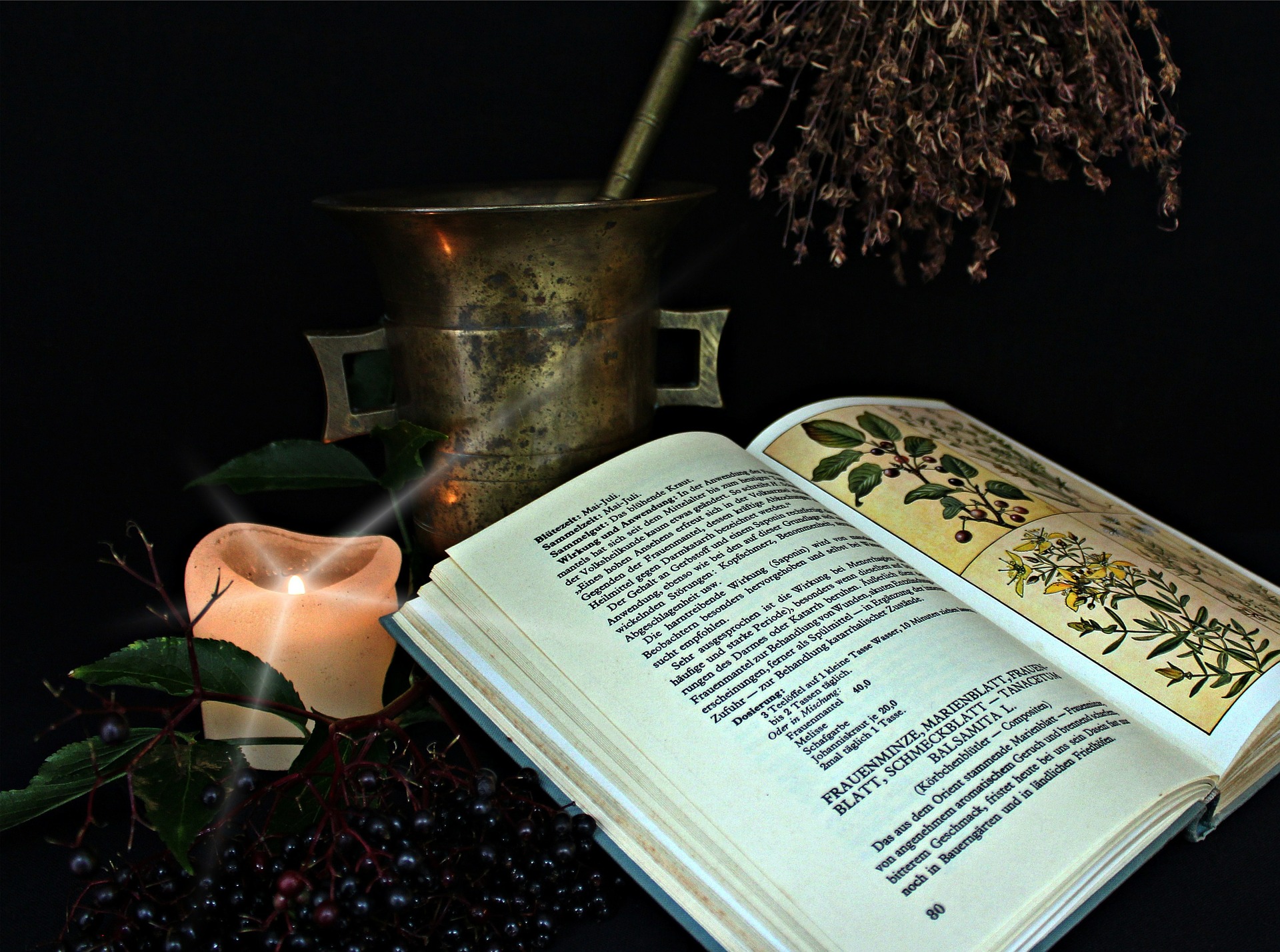We got snowed in last weekend — eighteen inches of snow, no heat, no electricity and no way to get out of our driveway. Since there was absolutely nothing else I could do, I took the opportunity to bundle up in blankets, sit down in my favorite chair and read. All day — just read. It was heavenly to feel ok about not doing anything productive. Looking back, I realize how ironic that statement actually is; that my so-called non-productive time led me into some fascinating ideas to explore.
A few weeks ago I impulsively picked up a book at Barnes and Nobles on medicinal herbs. Since National Geographic had published it, the purchase seemed both reasonable and justifiable. As usual though, once I came home, I got busy and put it into my “I’ll read it someday pile.” Last Saturday was the day!
I have been considering buying a grow light for herbs since this house simply does not have enough light in the kitchen to support them. Thinking the book could give me some direction, I grabbed it and a couple of others from the shelf and began to peruse. I didn’t make any headway with the grow light, but I certainly did with the subject of herbs.
Although the of benefits of “traditional” medicine, including the use of herbs as medication had been recognized across cultures for centuries, their value in the United States waivered over time. With help from pharmaceutical companies and their marketing departments, the idea of using medicinal herbs as a form of treatment became equated with that of bloodletting or balancing the humours. Using medicinal herbs was deemed as coming from an unscientific and uninformed era; modern, educated people no longer had to rely on superstitions for their physical and emotional healthcare. They had formulated drugs available.
Then, in the 90’s, the pendulum began to swing. Herbal medication once again became popular as people searched for cures they perceived as safer, more natural, cheaper and perhaps even more effective. By 1997, Americans were spending over 26 billion dollars per year on herbal supplements and medications. Today, that amount continues to increase, with recent statistics from a CDC/NCCIH report showing Americans are using 9.2% of their out-of-pocket spending on what is termed “Alternative Healing.”
As I read, I realized that the terms “Alternative Healing” and “Medicinal Herbs” provoked a mixed reaction in me. On one hand, I thought of the thousands of people desperately seeking the promise of a cure for a loved one and wondered how many were taken in by bogus claims.
On the other, I remembered sitting at my grandmother’s kitchen table drinking peppermint tea that she had brewed with leaves from her garden when I had a cold or when my stomach was upset. It was comforting and it worked.
With drug prices soaring instead of falling and drug shortages becoming commonplace (the latest AMA report shows 182 current drug shortages in the United States), looking for relief in alternative methods, including medicinal herbs, seems both reasonable and likely. Access to accurate and timely information about alternative health care, including the use of herbs as supplements and medications, is important for the American public.
Including culinary herbs in a kitchen garden is almost a given for most cooks. They appreciate the subtle flavor improvements fresh herbs can give a dish. Unlocking the medicinal value of those same herbs adds another layer to their value in the garden. However, being realistic about their uses and limitations is also important. Herbs, like all medications, can be dangerous if improperly used. Before using herbs medicinally for yourself or your children, please check with your physician and your pharmacist. Some herbs can negatively interact with pharmaceutical medications.
Of the literally hundreds of possibilities, we have selected nine familiar culinary herbs that are easily grown here in Midwestern gardens. (Those with asterisks do well indoors too.) All are also well-known for their traditional medicinal characteristics. Herbalists and other trained medical providers may suggest additional uses on a case-by-case basis.
*** Before using herbs medicinally for yourself or your children, check with your physician and your pharmacist.
If you haven’t done so already, think about adding some herbs to your spring planting list. They will not only enhance the flavors of your favorite foods, they can boost your health and benefit your wallet.










